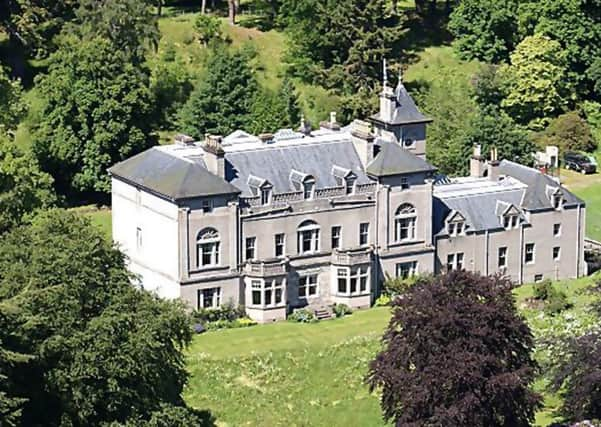Monarch of the Glen estate buyers ‘to preserve legacy’


For more than two centuries, the MacPherson clan held the fort at Balavil, near Kingussie in the Highlands, described as the “jewel in the crown” of sporting estates in the country.
The 7,000-acre Balavil Estate in Inverness-shire includes the mansion known to millions as Kilwillie from TV series Monarch of the Glen. But now new millionaire owners have moved in, pledging to preserve the legacy of the estate for generations to come.
Advertisement
Hide AdAdvertisement
Hide AdAnd instead of worrying about how to make the estate pay for itself, like reluctant Monarch Archie MacDonald in the BBC hit, the new owners have vowed to return it to being a place of leisure.
Dutch investor Eric Hereema and his wife Hannah – daughter of Scottish singer Fiona Kennedy and businessman Francis Clark – paid an undisclosed sum for Balavil, which had been on the market for £5.2 million.
But despite being one of the top sporting estates in the country, the couple intend to turn it into the ultimate family home, with no plans to continue running it as a business.
The iconic mansion on the 7,500-acre estate runs from the River Spey to the Monadhliath Mountains.
The couple currently live on a 36-acre estate in West Sussex where they have a successful vineyard. But with a nine-month-old and another child due in October, they have decided to make a return to Mrs Hereema’s spiritual home in the Cairngorms.
She said: “Having a home in Scotland, for me, is really important. It’s part of my past – and my future – and very much the fabric of my life. Our family home is in Blairs, I went to Gordonstoun and I have many happy memories in the Cairngorms.
“Balavil is in the heart of Scotland and very much in the centre of my family’s upbringing. It will be lovely to spend more time in Scotland and be able to share where I was raised with my own children.”
The estate had never been on the market previously. It went on sale for offers in the region of £7m in 2013, but this was recently reduced to £5.2m.
Advertisement
Hide AdAdvertisement
Hide AdThe sprawling grounds used to be let out for shooting or other corporate visits, but the couple have more low-key plans to use the estate as a family home. However they have vowed to “preserve its legacy” for generations to come.
The new lady of the estate said: “Who knows what will happen in the future, but for now that’s not our intention. It is an entertainment house, and it deserves to be used. You can tell there’s been a lot of fun had in it.”
She added: “My husband and I are both fans of the architect who designed the house, Robert Adam. His design leaves it open to interpretation. We will do everything in a sympathetic way.The main focus for us is to restore and conserve it and make it an incredible family home.”
Mr Heerema, 54, and his 28-year-old wife run one of the most successful vineyards in Europe, Nyetimber. Mrs Hereema said she plans to split her time between the Highlands and her other home in West Sussex, adding: “The Caledonian Sleeper goes directly from London to Kingussie. It will be an adventure for the little ones.” The previous owners, Allan Macpherson-Fletcher and his wife Marjorie, who inherited the estate from his aunt 40 years ago, have planning permission to build a new home on the estate.
Mrs Hereema said: “The family who have lived here for the last decades have done a great job, and we’re looking forward to becoming neighbours. It’s a responsibility and a responsibility which we will take seriously being the custodians of Balavil for future generations, but it’s important that we do this.”
In 1790, James MacPherson, known for translating Gaelic manuscripts from third-century bard Ossian, commissioned Adam to build the mansions, but died before it was finished. The house was destroyed by a fire in 1903, but rebuilt in the same style.